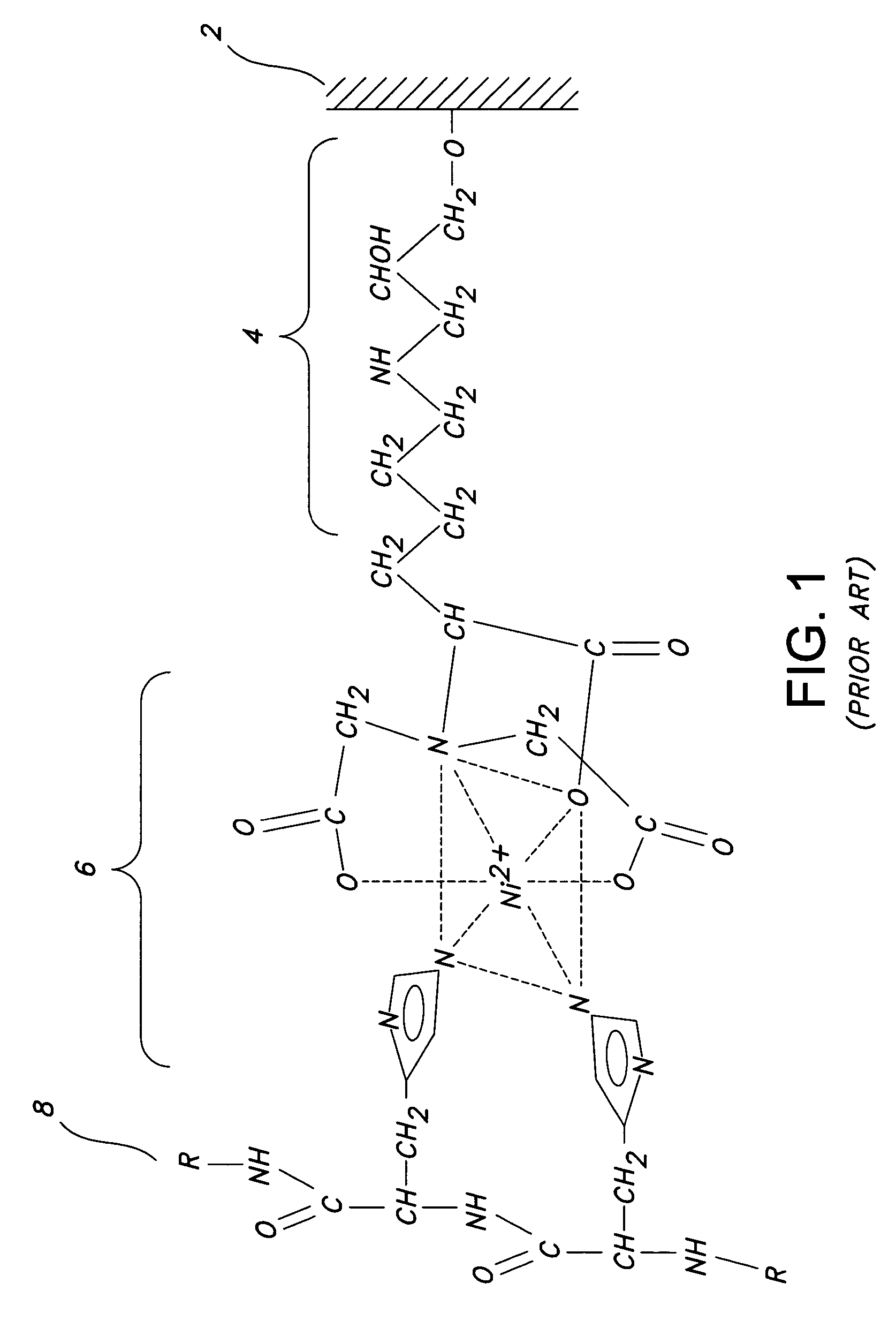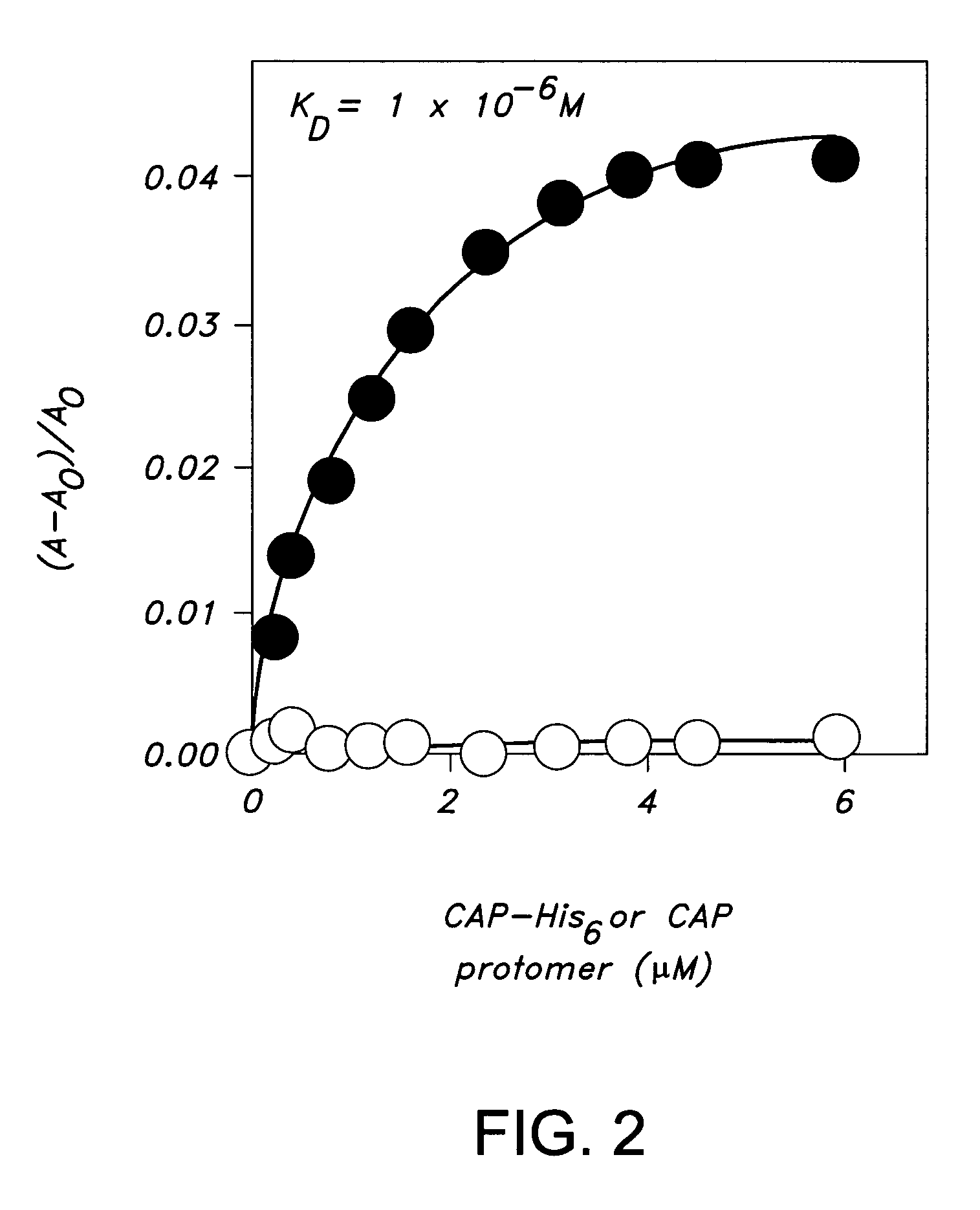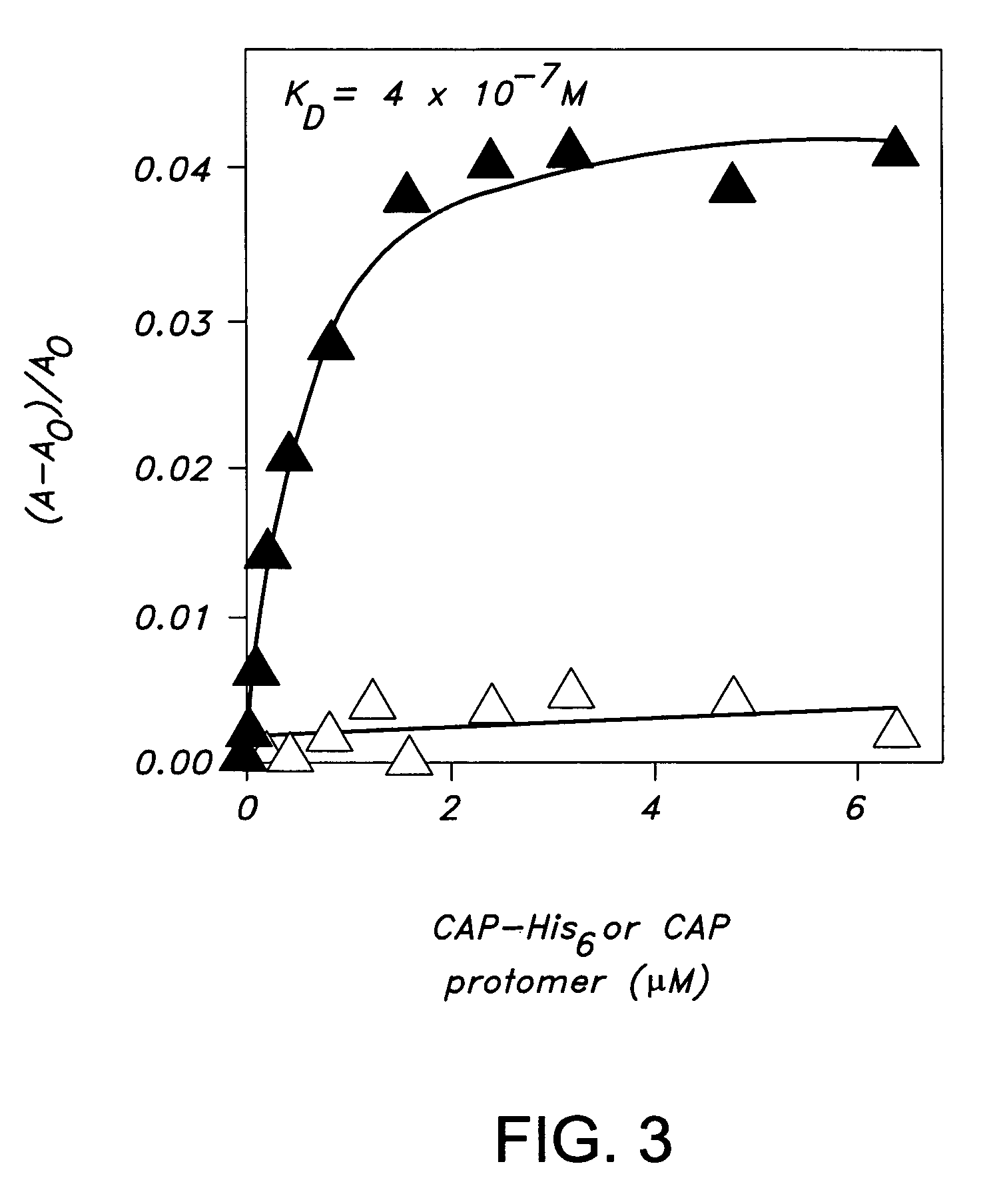Bis-transition-metal-chelate probes
a technology of metal chelate and probes, applied in the field of inventing molecules and methods, can solve problems such as difficult site-specific labeling
- Summary
- Abstract
- Description
- Claims
- Application Information
AI Technical Summary
Benefits of technology
Problems solved by technology
Method used
Image
Examples
example 1
Synthesis of (Ni2+-NTA)2-Cy3
A. Synthesis of (NTA)2-Cy3
[0173]N-(5-amino-1-carboxypentyl)iminodiacetic acid (Dojindo; 26 mg, 80 μmol) was dissolved in 1.6 ml 0.1M sodium carbonate and was added to Cy3 bis-succinimidyl-ester (“Cy3 Reactive Dye” from Amersham-Pharmacia Biotech). Following reaction for 1 hour (with vortexing at 15-min intervals) at 25° C. in the dark, products were purified from excess N-(5-amino-1-carboxypentyl)iminodiacetic acid using a Sep-Pak C18 cartridge ((Millipore; pre-washed with 10 ml of acetonitrile and 10 ml water; washed with 20 ml water; eluted with 1 ml 60% methanol), dried, re-dissolved in 200 μl methanol, and purified by preparative TLC [1000 Å silica gel (Analtech); NH4OH:ethanol:water 55:35:10 v / v / v]. Three bands were resolved, corresponding to (NTA)2-Cy3 (rf=0.2), (NTA)1-Cy3 mono acid (rf=0.5), and (NTA)2-Cy3 bis acid (rf=0.8). (NTA)2-Cy3 was eluted using 60% methanol, dried, re-dissolved in 2 ml water and quantified spectrophotometrically (ε550-150,0...
example 2
Synthesis of (Ni2+-NTA)2-Cy5
A. Synthesis of (NTA)2-Cy5
[0176]N-(5-amino-1-carboxypentyl)iminodiacetic acid (Dojindo; 40 mg; 125 μmol) was dissolved in 0.8 ml 0.1M sodium carbonate and was added to Cy5 bis-succinimidyl-ester (“Cy5 Reactive Dye” Amersham-Pharmacia Biotech; 800 nmol). Following reaction for 1 h (virtexed at 15 minute intervals) at 25° C. in the dark, products were purified from excess N-(5-amino-1-carboxypentyl)iminodiacetic acid using a Sep-Pak C18 cartridge (Millipore; procedure as above), dried, re-dissolved in 200 μl methanol, and purified in 100 μm portions by preparative TLC [silica gel, 1000 Å (Analtech); NH4OH:ethanol:water in a 55:35:10 v / v / v. Three bands were resolved, corresponding to (NTA)2-Cy5 (rf=0.2), (NTA)1-Cy5 mono acid (rf=0.6), and (NTA)2-Cy5 bis acid (rf=0.8). The (NTA)2-Cy5 was eluted with 60% methanol, dried, re-dissolved in 2 ml water and quantified spectrophotometrically (ε550=250,000M−1 cm−1). Yield: 60 nmol; 7.5%.
B. Synthesis of (Ni2+-NTA)2-Cy5...
example 3
Preparation of a C-Terminally Hexahistidine Tagged Derivative of the Transcriptional Activator CAP (CAP-His6)
A. Preparation of CAPHis6
[0179]Plasmid pAKCRP-His6 encodes CAP-His6 under the control of bacteriophage T7 gene 10 promotor. Plasmid AKCRP-His6 was constructed from plasmid pAKCRP (as described in Kapanidis, A. et al., J. Mol. Biol. 312:453-468 (2001) by using site-directed mutagenesis (as described in Kukel, et al., J. Meths. Enzymol., 204:125-138 (1991)) to insert six His codons (CAC-CAC-CAC-CAC-CAC-CAC) after codon 209 of the crp gene.
[0180]To prepare CAP-His6, a culture of E. coli strain BL21(DE3) (Novagen) transformed with pAKCRP-His6 was shaken at 37° C. in 1 L LB (as described in Miller, J., Experiments in Molecular Genetics, Cold Spring Harbor Laboratory, Cold Spring Harbor, N.Y. (1972)) containing 200 mg / ml ampicillin until OD600=0.5, induced by addition of isopropyl-thio-β-D-galactoside to 1 mM, and shaken an additional 3 h at 37° C. The culture was harvested by cen...
PUM
| Property | Measurement | Unit |
|---|---|---|
| Molar density | aaaaa | aaaaa |
| Molar density | aaaaa | aaaaa |
| Concentration | aaaaa | aaaaa |
Abstract
Description
Claims
Application Information
 Login to View More
Login to View More - R&D
- Intellectual Property
- Life Sciences
- Materials
- Tech Scout
- Unparalleled Data Quality
- Higher Quality Content
- 60% Fewer Hallucinations
Browse by: Latest US Patents, China's latest patents, Technical Efficacy Thesaurus, Application Domain, Technology Topic, Popular Technical Reports.
© 2025 PatSnap. All rights reserved.Legal|Privacy policy|Modern Slavery Act Transparency Statement|Sitemap|About US| Contact US: help@patsnap.com



